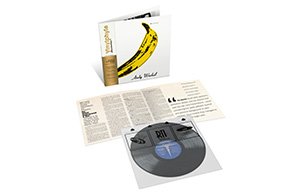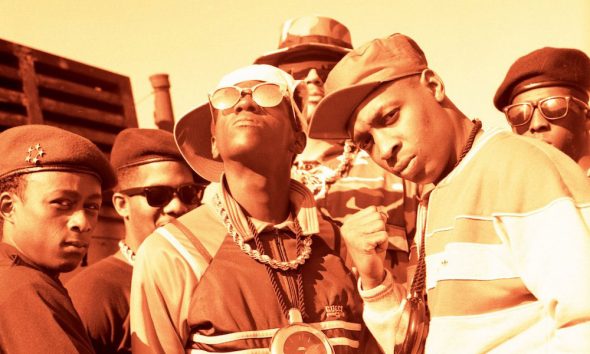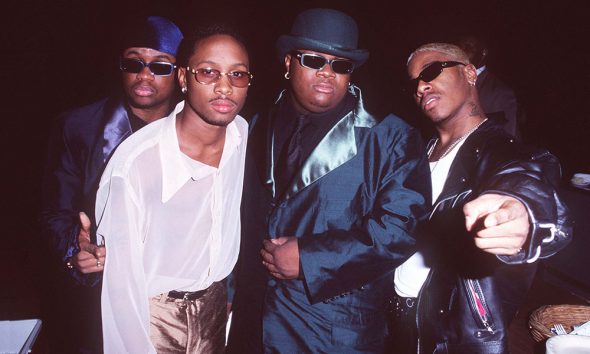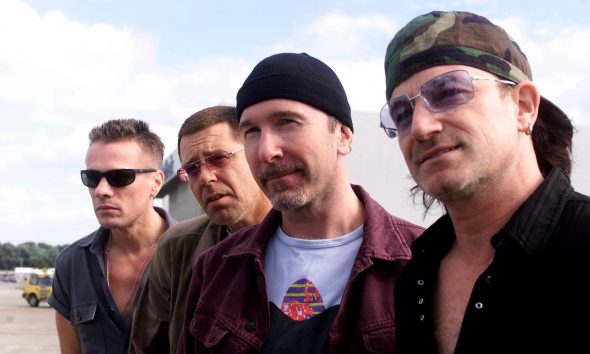Garth Hudson, Keyboardist And Saxophonist For The Band, Has Passed Away
A keyboardist and saxophonist for the legendary rock group, he was 87 years old.
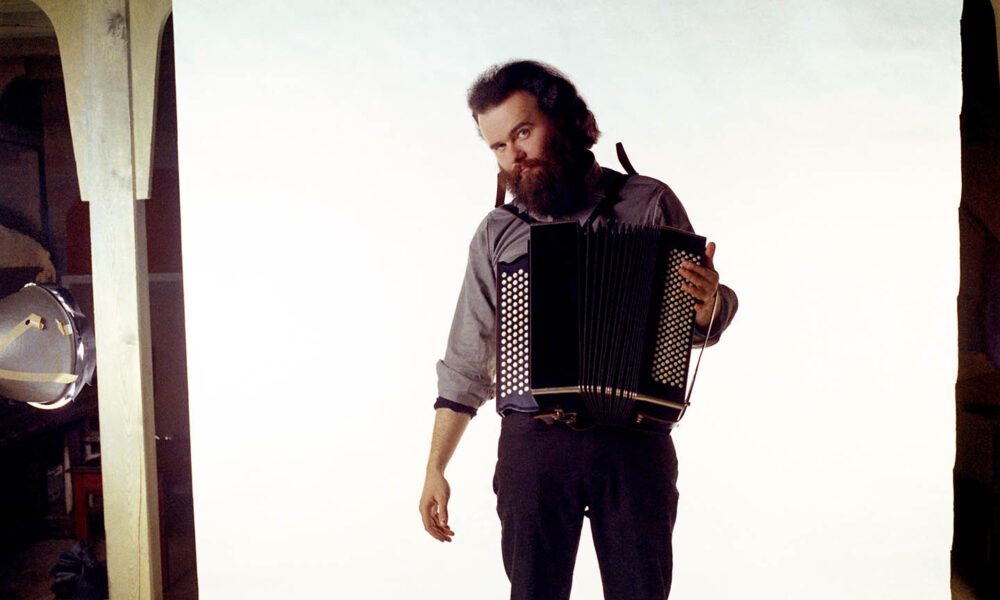
Garth Hudson, keyboardist and saxophonist for The Band, has passed away. Known affectionately by friends as “The Bear,” Hudson was a large, friendly man with an enormous beard – and although he was The Band’s only non-singer, his hands spoke volumes. His organ style, deeply informed by the classical and jazz he grew up playing, was a rock cornerstone. In particular, his opening salvo on “Chest Fever,” from the Band’s 1968 debut album Music from Big Pink, became an instant standard.
Eric Garth Hudson was born on August 2, 1937, in London, Ontario. His first instrument was his mother’s accordion, which he began playing in country bands at age 12. His mother would also play piano by ear and sing, sometimes from a copy of the songbook Canada Sings. His father, a fighter pilot during World War I, helped him rebuild a pump organ.
Hudson spent one year majoring in music at the University of Western Ontario, performing Bach chorales and other classical staples. But his attention soon drifted: “I found out I could improvise. I probably found out too young,” he said in 1983. So he dropped out of school to work full-time as a musician, to his parents’ displeasure. “They knew what I was doing,” Hudson said, “but they didn’t want me playing in bars. Unfortunately, or fortunately, in order to become acquainted with the idiom of country or rock music, it is necessary to occasionally play in a bar. Bars are a rehearsal place.”
Hudson began gigging in rock bands, frequently traveling to nearby Detroit for sets. In 1962, he joined the Hawks, the backing band for the Canadian rockabilly singer Ronnie Hawkins. “Even when I worked back in Detroit, Ronnie was acclaimed as being the greatest rockabilly performer with the best band,” Hudson recalled. “Nobody could follow him, including Elvis, as far as an organic unit that could get up there and shake it up.”
The Hawks coalesced into a five-piece unit: Hudson, pianist Richard Manuel, guitarist Robbie Robertson, bassist Rick Danko, and drummer Levon Helm. The other four all sang, with Robertson usually on background and the other three splitting the leads. Two years later, in 1964, the Hawks split away from Hawkins and went to New York to back the folk singer John Hammond Jr. on his album So Many Roads, released the following year. In New York, they also caught the attention of Bob Dylan, who hired them to play with him.
Dylan took the Hawks on the road as his backing band in 1965 and 1966, after he famously “went electric” at the Newport Folk Festival. They encountered hostile audiences at many stops. “I think the whole folk movement was affronted,” Hudson recalled. “We were in the line of fire.” In Paris, the group played in front of a giant U.S. flag to an eruption of boos.
Still, touring the world with Dylan proved a positive experience. “Bob encouraged us to believe that we could write our own songs,” Hudson said. “Watching him sitting at his typewriter and working was an inspiration. We knew soon after we got with him that our association would be acknowledged in rock history.”
Dylan’s motorcycle accident in the summer of 1966 put a kibosh on his touring plans so, in early 1967, he and the Hawks hunkered down. Hudson set up a tape machine in the basement of the large, salmon-colored house in Woodstock, New York, that he was sharing with Danko and Manuel – nicknamed “Big Pink” – and began recording the freewheeling songs that Dylan and the Hawks were writing and, occasionally, covering.
In September 1967, Hudson copied ten of Dylan’s new songs onto a reel for his publisher, Dwarf Music, adding five more songs a few months later. This became known among fans as “The Basement Tape,” and featured songs Dylan intended to be covered by other artists, including such future classics as “I Shall Be Released,” “Tears of Rage,” and “Quinn the Eskimo.” The recordings themselves became widely bootlegged.
The Hawks renamed themselves The Band and cut their first album, Music from Big Pink, on Columbia Records in 1968. Recorded in about two weeks, it stood in stark contrast to the wave of wah-wah pedals and backwards tapes that other rock bands were favoring after the Summer of Love: It featured the group playing basic instruments in far-from-basic ways, mostly live and minimally overdubbed. The album’s highlight was Hudson’s magisterial introduction on “Chest Fever,” played on a Lowrey Festival organ; the sound seemed both rustic and futuristic, and big as a room.
The Band’s easy intimacy was received as a breath of fresh air. George Harrison of the Beatles was so inspired by the album that he flew to Woodstock to hang out with the group, collaborating with Dylan on the song “If Not for You.” Al Kooper – who had played behind Dylan at the Newport Folk Festival in 1965 – wrote in Rolling Stone, “Music from Big Pink is an event and should be treated as one.” He also called Hudson “one of the strangest people I ever met” and referred to his organ playing behind Dylan on “Ballad of a Thin Man” as “fourth-dimensional work.”
The Band became a major act: They played Woodstock in 1969 and co-headlined the Summer Jam at Watkins Glen in 1973 in front of 600,000 people, then a record for a rock concert. But The Band, and Hudson in particular, had begun to tire of touring, and they stepped away from the road for two years. Then Bob Dylan called them up for his North America tour in 1974 – his first in eight years, and at the time the fastest-selling rock series ever. Together, they received rave reviews; as the Toronto Sun said, “They made Dylan sound like he could sing.”
In 1975, 16 of the original 1967 recordings from the Big Pink basement, along with eight newer Band recordings, were officially issued as The Basement Tapes. The album sold substantially and was voted the best album of 1975 in the Village Voice’s rock critics’ poll. “We needn’t bow our heads in shame because this is the best album of 1975. It would have been the best album of 1967, too,” wrote the Voice’s Robert Christgau. “And it’s sure to sound great in 1983.”
Soon after, The Band called it quits in high style. On Thanksgiving of 1976, they headlined a giant farewell concert at San Francisco’s Cow Palace, dubbed “The Last Waltz.” With guests ranging from Hawkins to Dylan to Muddy Waters to Joni Mitchell, it was a revue-style showpiece for The Band’s history, as well as a sonnet to the ’60s rock generation. “From the start, it was apparent that The Band had come to play hard, loose, and happy,” Billboard reported, going on to praise their “roof-raising” version of “This Wheel’s on Fire” and singling out Hudson’s “closing flourishes sounding like hellfire itself.” Martin Scorsese captured the evening in his documentary, also called The Last Waltz, released in 1978 to enormous critical acclaim; it is generally considered among the greatest rock concert films ever made, and was added to the National Film Registry at the Library of Congress in 2019.
“The Last Waltz” would be the final time the five-piece Band shared a stage: Without Robertson, and occasionally without Hudson, they reunited sporadically, starting in the early 1980s. Hudson became an active session player: In the ’80s and ’90s, he contributed to albums by Don Henley, Tom Petty, and Robert Palmer; in the late 2000s, he could be heard on two Neko Case albums, Fox Confessor Brings the Flood and Middle Cyclone.
Hudson also contributed to The Band’s reunion recordings, including the 1993 album Jericho, as well as solo work by Robertson, Helm, and Danko. He also continued to explore new musical styles–becoming, among other things, a polka devotee. He bragged in 2004 that he’d made “340 polkas, waltzes, and obereks” part of his accordion repertoire. In the mid-2010s, his tape library provided the source for The Basement Tapes Complete, a six-hour set that included 33 previously unheard songs.
“Anybody who gets a chance to play with Garth Hudson, they’d be a fool not to,” Helm once said. “As far as The Band is concerned, he’s the one who rubbed off on the rest of us and made us sound as good as we did.”








